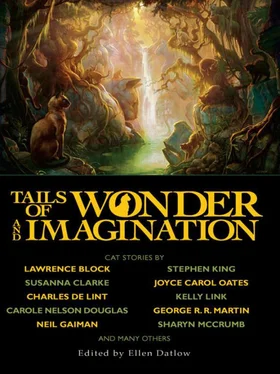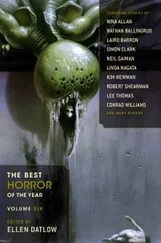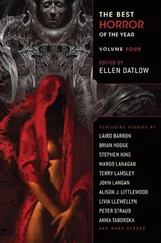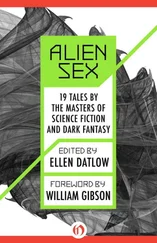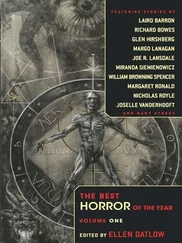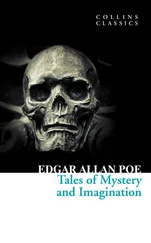Ellen Datlow - Tails of Wonder and Imagination
Здесь есть возможность читать онлайн «Ellen Datlow - Tails of Wonder and Imagination» весь текст электронной книги совершенно бесплатно (целиком полную версию без сокращений). В некоторых случаях можно слушать аудио, скачать через торрент в формате fb2 и присутствует краткое содержание. Год выпуска: 2010, ISBN: 2010, Издательство: Night Shade Books, Жанр: Фэнтези, Фантастика и фэнтези, Ужасы и Мистика, на английском языке. Описание произведения, (предисловие) а так же отзывы посетителей доступны на портале библиотеки ЛибКат.
- Название:Tails of Wonder and Imagination
- Автор:
- Издательство:Night Shade Books
- Жанр:
- Год:2010
- ISBN:978-1-59780-170-6
- Рейтинг книги:5 / 5. Голосов: 1
-
Избранное:Добавить в избранное
- Отзывы:
-
Ваша оценка:
- 100
- 1
- 2
- 3
- 4
- 5
Tails of Wonder and Imagination: краткое содержание, описание и аннотация
Предлагаем к чтению аннотацию, описание, краткое содержание или предисловие (зависит от того, что написал сам автор книги «Tails of Wonder and Imagination»). Если вы не нашли необходимую информацию о книге — напишите в комментариях, мы постараемся отыскать её.
collects the best of the last thirty years of science fiction and fantasy stories about cats from an all-star list of contributors.
Tails of Wonder and Imagination — читать онлайн бесплатно полную книгу (весь текст) целиком
Ниже представлен текст книги, разбитый по страницам. Система сохранения места последней прочитанной страницы, позволяет с удобством читать онлайн бесплатно книгу «Tails of Wonder and Imagination», без необходимости каждый раз заново искать на чём Вы остановились. Поставьте закладку, и сможете в любой момент перейти на страницу, на которой закончили чтение.
Интервал:
Закладка:
“—and he didn’t even ask me what the cats’ names was, like it didn’t matter none to—”
“Were these the ‘little girls’?” I asked as I flipped through the album pages until I found the dry-mounted snapshot of one of the most elaborate Katz’s signs: four kittens snuggled together in a hollowed-out bed of straw, their pointed little faces curious yet subtly wary, as if they’d all burrow into the straw if you took one step closer to them. Clearly a litter of barn kittens, even if you discounted the straw bedding; these weren’t Christmas-card-and-yarn-balls kittens, cavorting like live Dakin kittens for a Madison Avenue artist, but feral-type kittens, the kind you’d be lucky to coax close enough to sniff your fingers before they’d run off to hide in the farthest corners of the manure-scented barn where they were born. The kind of kitten who’d grow up slat-thin and long-tailed, slinking around corners like a fleshed-out shadow, or coming up to you from behind, as if sizing up whether or not to take a sharp-clawed swipe at your shoe before running for cover. The kind of cat you know will get kittened out before she’s three years old, winding up saggy-bellied and defensive by the time she’s four.
But when Gurney saw the eight-by-ten enlargement, his face lit up and his puckered lips stretched out into a broad grin, exposing what my own grandfather used to call “dime-store choppers” of an astonishing Chiclets gum uniform squareness and off-whiteness.
“You took a picture of my little girls! Usually they’re tricky ones, on ’count of Prissy and Mish-Mish lookin’ so much alike, but you caught ’em, by gummy, got them in just the right light—”
“Wait, wait, let me get this down,” I said, reaching over the seat for the notebook and pen resting on the front passenger seat. “Now, which one is which?”
His face glowing with the kind of pride most men his age took in showing off pictures of their grandchildren (or even great-grandkids), Gurney pointed at each kitten in turn, stroking their chemically captured images with a tender, affectionate forefinger, as if chucking each under her painted chin. “This ’un’s Smokey, the tiger gray, and here’s Prissy—see how dainty she looks, with them fox-narrow eyes and little points on her ears?—and right next to her is Mish-Mish, even though they’re both calicos, Mishy’s a little more patchy-colored than usual—”
“‘Mish-Mish’?” I asked, not knowing how he’d come up with that name; Gurney’s answer surprised—and touched—me.
“Got that name from the Milwaukee Journal Green Sheet, where they put all their funnies and little offbeat articles… was an article about the Middle East, and it mentioned how them A-rabs like cats so much, and how their version of ‘Kitty-kitty’ was ‘Mish-Mish,’ which is their lingo for peach color, on ’count of most of their strays bein’ sorta peachy-orange. See how Mish-Mish’s face is got that big splotch of peach on it? Oh, I know we’re not ’sposed to care what them A-rab folks think, on ’count of them bein’ the enemy or whatnot, but you can’t fault a people who care so much for their cats too much. Heard tell the Egyptians worshiped their cats, like gods… done up their pets as mummies, the whole shebang. So’s I don’t even mind when their descendants says they hate us, long as they take care of their cats—’cause a man who can hate a cat can’t much like hisself, I says.”
I had to laugh at that; before Gurney could go on, I quoted Mark Twain from memory: “If man could be crossed with the cat, it would improve the man but deteriorate the cat—”
Now it was Gurney’s turn to laugh, until he spittle-flecked his shirt collar before he went on, “Anyhows, next to Mish-Mish is Tinker, only you can’t tell from lookin’ at her that she’s a girl, on ’count of her only bein’ two colors and all, but from personal experience, most gray cats with white feet I’ve seen’s been girls. Don’t know why that is… sorta like how you never see a white cat with black feet and chest, like you see black cats with white socks and bibs. Funny how nature works that way, ain’t it?”
Having told me the names of the “little girls” (which I duly wrote down in my notebook), Gurney began paging through the rest of the album, matching heretofore anonymous painted felines with the names that somehow made them real—at least to the man who created them: black-bodied and white-socked Ming, with his clear, clear green eyes and luxurious long fur with a couple of mats along the chest; calico Beanie with her rounded gray chin and owl-like yellow-green eyes; dandelion-fuzzy Stan and Ollie, black-and-white tuxedo-patterned kittens, one obviously fatter, but both still too wobbly-limbed and tiny-eared to look anything but pick-me-up adorable; and too many more to remember offhand (thank goodness I had many clean pages left in my notebook that afternoon). But once each cat was named, I could never again look at it as just another Katz’s Tobacco cat; for instance, knowing that Beanie was Beanie made her into a cat, one with a history and a personality… you just knew that she was full of beans when she was a kitten, getting into things, playing with her tail until she’d spun herself like a dime-store top… And for a moment, Gurney’s cats became more than pigment and imagination. Not unlike the work of regular canvas-easels-and-palette artists, or those natural-born billboard painters, the legendary ones who never needed to use those gridlike blue-prints to create the advertisements.
It was sad, really, how that reporter had missed out on the essence of Gurney’s work; all the “pup reporter” seemed to be interested in was how long Gurney had been at it.
As Gurney looked at the last of the barn pictures I’d taken and enlarged, he said shyly, “I feel sorta humbled by this and all… it’s like I was one of them art-fart painter guys, in a gallery ’stead of a regular workin’ Joe… Oh, not that I’m not pleased… it’s just… oh, I dunno. It just seems funny to have my cats all put in a book form, ’stead of them just bein’ out where they are, in the open and all. Like they was suddenly domesticated ’stead of bein’ regular barn kitties.”
I didn’t know how to answer that; I realized that Gurney must be astute enough to realize that his signs were works of art—he may have been slightly inarticulate, and most likely unschooled, but he wasn’t ignorant by any means—he was obviously in a quandary; on the one hand, he was from a time when work was simply something you got paid for, period; yet on the other hand, the fact that he’d been interviewed on TV and caught me taking pictures of his efforts must have been an indication that his work was something special. He couldn’t quite cope with having a fuss being made over something he’d considered to be paid labor.
I gently lifted the book off his lap and placed it on the seat between us before saying, “I can empathize with you there… I work as an advertising photographer, taking pictures of products for clients, and when someone praises me for my composition, or whatever, it can be a strange feeling… especially since I’m just a go-between when it comes to the product and the consumer—”
Gurney’s watery pale-blue eyes were darting around as I spoke, and for a moment I was afraid that I was losing his attention, but instead he surprised me by saying, “I think Fella’s lost his shyness… the sun’s been shining for a good minute now.”
Quickly, I got out of the car and positioned myself in front of the barn; true to Gurney’s word, Fella was no longer shy, but exposed in all his sunlit perfection against the sun-weathered barn. It’s funny, but even though the lettering next to the cat was badly flaked, I could almost see every individual hair of the tomcat’s fur.
Читать дальшеИнтервал:
Закладка:
Похожие книги на «Tails of Wonder and Imagination»
Представляем Вашему вниманию похожие книги на «Tails of Wonder and Imagination» списком для выбора. Мы отобрали схожую по названию и смыслу литературу в надежде предоставить читателям больше вариантов отыскать новые, интересные, ещё непрочитанные произведения.
Обсуждение, отзывы о книге «Tails of Wonder and Imagination» и просто собственные мнения читателей. Оставьте ваши комментарии, напишите, что Вы думаете о произведении, его смысле или главных героях. Укажите что конкретно понравилось, а что нет, и почему Вы так считаете.
